Rise of Legends Review
Rise of Legends
If you've been waiting for a new and innovative RTS, your wait is over.
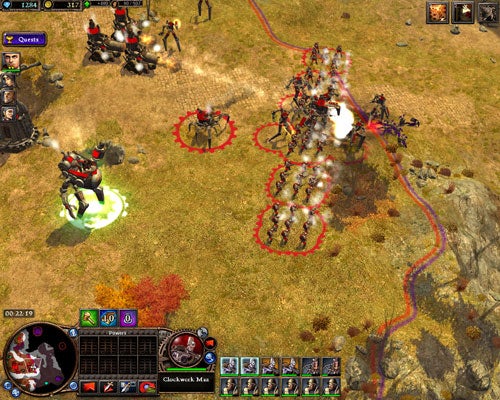
Verdict
Key Specifications
- Review Price: £26.99
When was the last time you played an RTS that showed any real imagination?
I’m not suggesting for a minute that we haven’t had any good ones in the last few years, just noting that the best – Rome: Total War, Warhammer 40K: Dawn of War, LoTR: Battle for Middle Earth II – have all been based either on well-established worlds from other media, or on a firm historical base.

There’s nothing at all wrong with that. Doing justice to rich source material takes some skill, and history has been the grounding for some of the best games of all time. Yet one of the reasons we play games is to see new worlds, get to grips with new landscapes, see strange creatures at work, and lose ourselves in someone else’s imagination. So why do we keep on settling for the same elves and orcs; the same WWII tomfoolery; the same tired space marine rip-offs; the same near-future war clichés we’ve been hit with since the first days of Command and Conquer?
Who knows? Thankfully, Rise of Legends is different. True, it is a fantasy RTS, but the team at Big Huge Games hasn’t abandoned the historical basis that underpinned the brilliant Rise of Nations. Instead, they’ve simply given it a new spin. Imagine the Italian city states of post-renaissance Italy had Leonardo Da Vinci’s plans and sketches become the basis for a rapid high-tech revolution; a world where bands of mercenaries ride into battle against clockwork giants while steam-powered ornithopters race through the skies overhead.
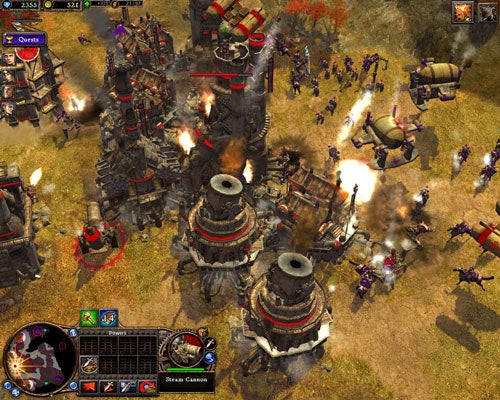
Now imagine a race of sorcerers pulled straight from the Arabian Nights, their domed fortresses floating above the sands, their hosts led by giant scorpions and fireball-throwing Djinns. Finally, picture a Mayan culture infused with extra-terrestrial technology, its gods taking shape on the battlefield and mechanical snakes and jaguars defending its Ziggurats. Wouldn’t you rather get to grips with those on the battlefield than another collection of dwarves and goblins?
Damn right you would. And when you combine these civilisations with an enhanced version of the Rise of Nations engine, it makes for a spectacular RTS. It might not have some of the individual unit detail and glossy lighting of Battle for Middle Earth II – which for my money is the finest looking RTS around right now ¬– but it has a greater sense of scale and some superb physics-based troop scattering, base demolishing effects. And the art design is, if anything, better. From the steam-pumping labs and industrialised cities of the Vinci faction to the mysterious glows and arcing electricity of the Cuotl civilization, the buildings look spectacular, while the sight of a colossal Cuotl sun-idol striding into battle never fails to impress.
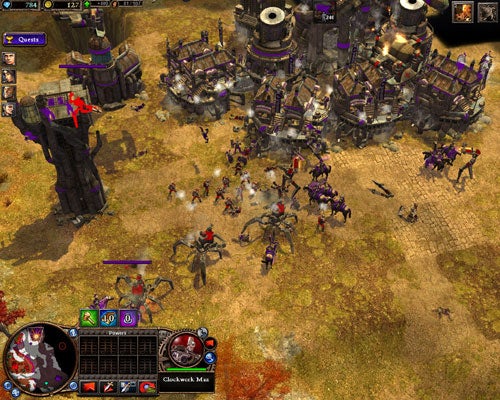
Each culture has its own distinct aesthetic, and even the landscapes prove enthralling. For every area of red-hot desert or icy waste, there is a rolling, pastoral territory to be conquered, or a region of mountainous rain forest that can only be won through clever use of air support
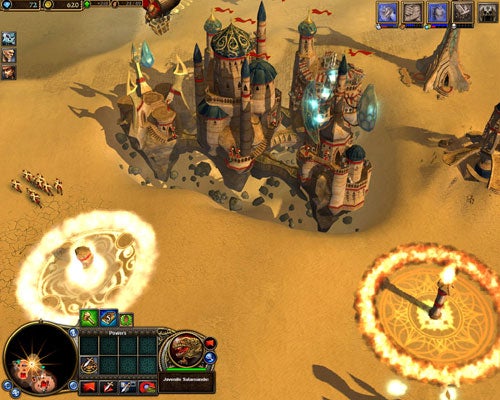
Of course, none of this would matter if the underlying gameplay wasn’t so very tight. Rise of Nations was the first RTS to successfully fuse the twin pillars of PC strategy gaming – Command and Conquer and Civilization – and the fundamental elements remain at work here. Appropriately for a game that takes Da Vinci as a central influence, cultural development and military development go hand in hand; in all cultures research and city-building are the only way to open up new structures and, thus, new units, and maintaining and expanding borders is the only way to gain valuable resources. Make no mistake: economic success is key, whether that means mining the local Tiberium equivalent, sending caravans off to trade – or in the case of the Cuotl – harnessing energy.
The great thing is that while it all sounds very deep and complicated, the game keeps everything fantastically streamlined. You don’t need to tell miners or merchants where to go; simply build them and they’ll just get on with business. And there’s even good reason to take the route of peace: every map has some neutral cities and outposts, and while you can wade in and take these in by force, it’s sometimes more effective to use trade to draw them into an alliance.
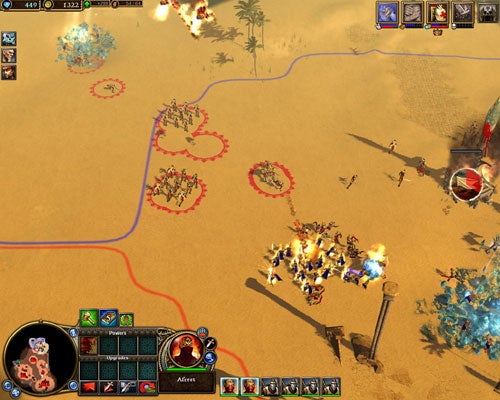
Best of all, the game doesn’t expect you to read the manual or uncover these mechanics for yourselves. Instead, the campaign mode takes you through from the basic elements to the more complex options in a practically transparent fashion, to the extent that I’m wondering why I’ve spent so much time playing through tedious tutorial missions in the past. I can’t say the story is all that inspiring or the script and voice-work is anything more than functional, but the missions are challenging, and they’re bound together by a strategic map that, while not hugely sophisticated, at least puts you in control of the wider war. The game even helpfully suggests that you avoid particularly difficult battles until your forces are ready.
I’d heed the warning. One thing that soon becomes apparent is that Rise of Legends is not just another build, defend, develop and rush RTS. Such caveman tactics might work well in some missions, particularly in the early hours, but you’ll soon find a more flexible, intelligent approach becomes vital. In its own quiet way, the AI is ingenious, testing your defences, and encouraging overambitious assaults that rapidly turn into deathtraps. To succeed, you need to raise your game to match, staging feints, holding the front lines, and using aircraft to transport shock troops in for raids and dramatic city captures. In other words, it’s an RTS that actually asks you to think out of the box and – what’s more – one that seems aware of the tactical advantages of ground and visibility. And while I’m on the subject of AI, it’s telling that I’ve never once been annoyed by poor pathfinding or unresponsive units. Line and range of sight is an issue, but this is not a game where you’re constantly telling the troops where to go and who to batter.
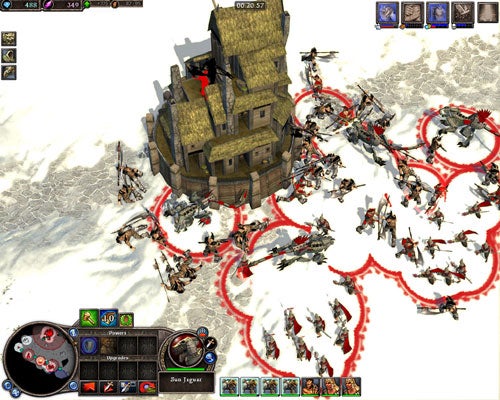
The big, three-stage campaign will likely keep you going for some time, but the thing that will really ensure Rise of Legends’ longevity is the quick battle mode, in both its online and offline forms. Admittedly, there are technical issues with Internet play, with many players complaining of poor synch and dropped connections, but Big Huge Games is at work on these, and once it has them sorted it should be on to a winner. That’s mostly because the three different factions are actually very well balanced.
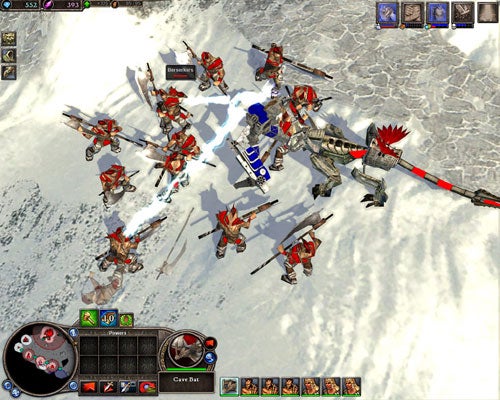
The basic race, the Vinci, is heavily reliant on technology, and seem built for a more traditional build, dig-in and then blast style of gameplay. Yet – as with the Terrans in Starcraft – more covert options that rely on air power can prove every bit as effective. The Arabian Nights gang – the Alim – are magic-based and can create numerous and powerful units fairly quickly, with some fantastic units based on a strange glass technology when your cities reach the right level. Rise of Legends is too considered a game to have an equivalent to Starcraft’s Zerg, but the Alim come closest to that bill.
The Cuotl are the hardest to get your head around, but boast some great defensive structures and possibly the best super-units in the game. What’s important is that no civilisation seems to have a major edge, and just when you think you’ve spotted one, the game throws up a defence or an offensive option that you hadn’t thought of. In this respect, it’s very similar to Starcraft and – let’s face it – millions of Koreans can’t be wrong.
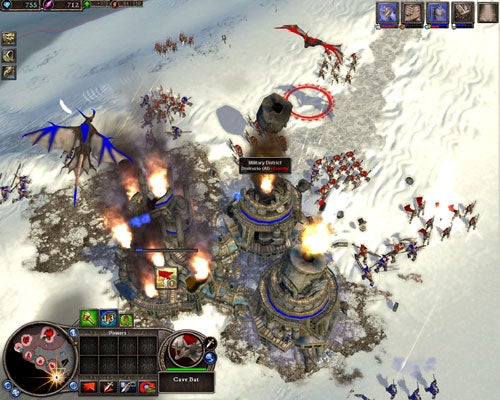
I do have one niggle. The sound effects aren’t all they could be, never quite finding the blood and thunder to match what’s going on onscreen, and there were times when they stuttered in the heat of a packed siege. Still, as niggles go it’s a small one. Perhaps the best thing I can say about Rise of Legends is that it’s one of those few games that gets better and better the more you play it.
At first it seems a little staid, even conservative; an efficient RTS that relies on its innovative setting to grab your interest. Yet as time goes on it grows more and more satisfying, more challenging, and more engaging. It’s the Mercedes SLK of strategy games – other games might have more initial impact, but Rise of Legends is beautifully engineered and provides just as many thrills when the pedal hits the metal. And what’s more, it has the staying power to last. For me, that puts it way ahead of the RTS pack in just about every way possible.
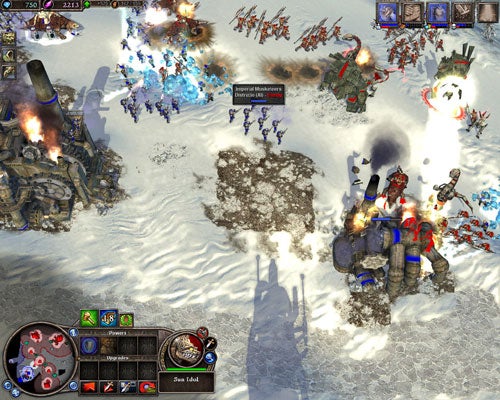
”’Verdict”’
The best, most essential RTS of the year so far. The setting is inspired and the gameplay, while initially underwhelming, broadens out to enthral and challenge on every level. It might take time to build a reputation, but it’s one that will hold for many years to come.

